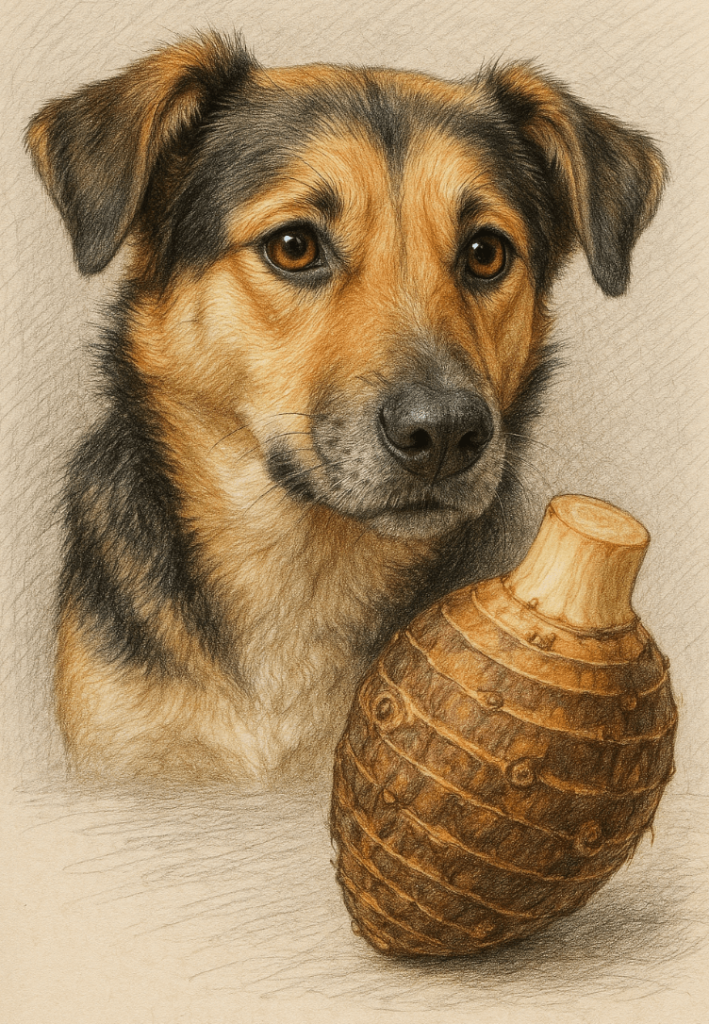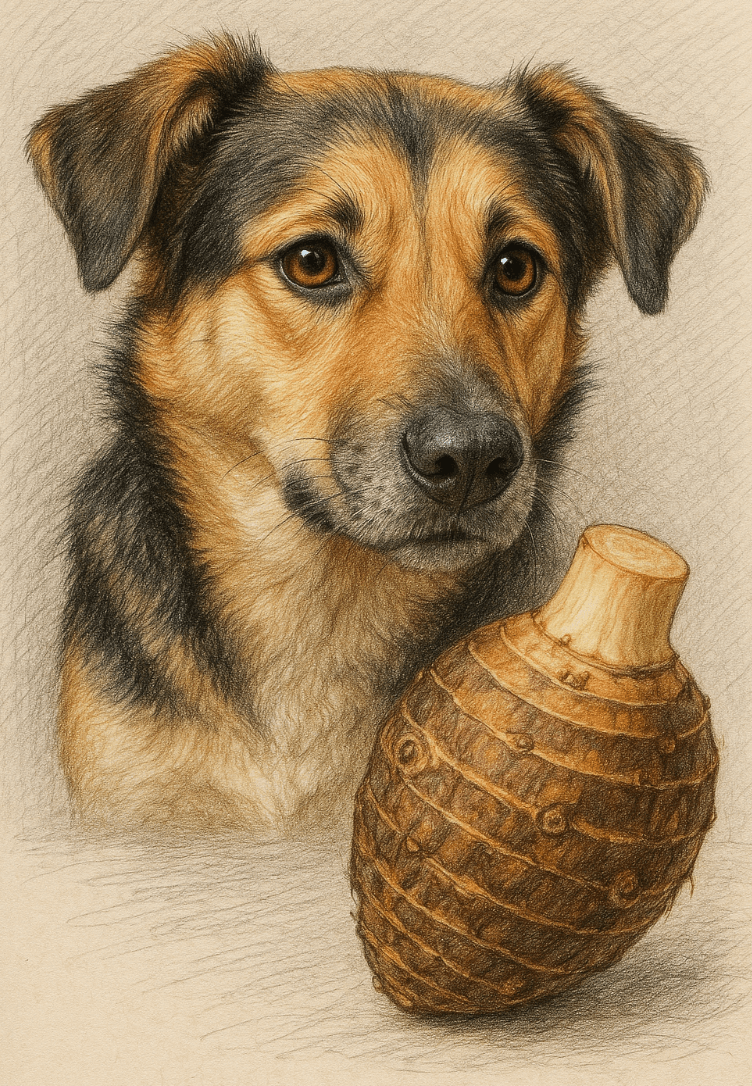Can Dogs Eat Taro? What You Need to Know
Taro, a starchy root vegetable commonly used in cuisines worldwide, is loved for its earthy flavor and nutritional benefits. However, when it comes to feeding taro to our canine companions, pet owners often wonder if it’s safe. While dogs can enjoy certain human foods as occasional treats, not all vegetables are suitable for their digestive systems. Taro, in particular, requires careful preparation due to its naturally occurring compounds that can be harmful if consumed raw or improperly cooked. In this blog post, we’ll explore whether taro is safe for dogs, how to prepare it properly, and what precautions you should take to ensure your furry friend stays healthy and happy.
Potential Risks of Feeding Taro to Dogs
While taro can offer some nutritional benefits, it also poses risks if not handled properly. Understanding these potential dangers is crucial before introducing taro into your dog’s diet.
Oxalates Can Cause Irritation:
Taro contains calcium oxalate crystals, which can irritate your dog’s mouth, throat, and digestive tract if consumed raw.Choking Hazard from Hard Texture:
Raw taro has a tough, fibrous texture that can pose a choking risk, especially for smaller dogs or aggressive chewers.Digestive Upset from Improper Preparation:
Feeding undercooked or unpeeled taro may lead to vomiting, diarrhea, or gastrointestinal discomfort.Risk of Allergic Reactions:
Some dogs may have sensitivities to new foods like taro, resulting in allergic reactions such as itching or swelling.High Starch Content:
Taro is high in carbohydrates, which can contribute to weight gain or digestive issues if fed in excess.
These risks highlight why caution and proper preparation are essential when considering taro as a treat for your dog.
Benefits of Feeding Taro to Dogs (When Prepared Safely)
When prepared correctly, taro can provide some health benefits for dogs, making it an occasional treat worth considering. Here’s what makes taro a potentially valuable addition to their diet.
Rich in Fiber:
Taro contains dietary fiber, which supports healthy digestion and can help regulate bowel movements.Good Source of Vitamins:
It is packed with vitamins like B6 and C, which support immune function and overall vitality.Low in Fat:
As a low-fat vegetable, taro can be a healthy alternative to higher-calorie treats.Provides Energy:
The complex carbohydrates in taro offer a steady source of energy, ideal for active dogs.Hydration Support:
Taro has a high water content, helping keep your dog hydrated, especially during warmer months.
While these benefits are appealing, moderation and proper cooking are key to ensuring taro is safe for your pup.
Check this guide 👉Can Dogs Eat Gelatin? Best 7 Expert Tips!
Check this guide 👉Can Dogs Eat Colby Jack Cheese? Best 7 Expert Tips!
Check this guide 👉Can Dogs Eat Coleslaw? Best 7 Expert Tips!

Safe Ways to Prepare Taro for Dogs | Risks of Unsafe Preparation |
|---|---|
Boil taro thoroughly until soft | Feeding raw taro can cause mouth irritation |
Peel the skin completely before cooking | Undercooked taro may upset digestion |
Mash or puree cooked taro for easier consumption | Leaving skin on increases choking hazards |
Serve in small, bite-sized portions | Adding seasonings like salt or spices is harmful |
Mix with plain dog food or serve alone | Overfeeding taro can lead to weight gain |
How to Safely Introduce Taro to Your Dog’s Diet
If you decide to feed taro to your dog, following these steps will help ensure a safe and positive experience. Proper preparation and portion control are critical to avoiding adverse effects.
Start with Small Portions:
Begin by offering a tiny amount of cooked taro to monitor your dog’s reaction and tolerance.Cook Thoroughly:
Always boil or steam taro until it’s soft and free of any raw or fibrous textures.Remove the Skin Completely:
Peel the taro before cooking to eliminate choking hazards and reduce oxalate levels.Avoid Seasonings and Additives:
Never add salt, sugar, butter, or spices, as these can upset your dog’s stomach or harm their health.Observe for Allergic Reactions:
Watch for signs of allergies or digestive upset after introducing taro, and consult your vet if issues arise.
By taking these precautions, you can safely incorporate taro into your dog’s diet as an occasional treat.
Signs Your Dog May Be Struggling with Taro Consumption
Even with careful preparation, complications can arise if your dog consumes taro improperly or in large quantities. Recognizing these warning signs allows you to act quickly if something goes wrong.
Excessive Drooling:
This could indicate irritation caused by calcium oxalate crystals in raw or undercooked taro.Vomiting or Diarrhea:
Digestive upset is a common sign of improper preparation or overfeeding.Difficulty Swallowing:
If your dog struggles to swallow or appears uncomfortable, they may have eaten a piece that was too hard or large.Lethargy or Discomfort:
A sudden lack of energy or signs of pain might suggest ingestion of harmful substances or an allergic reaction.Pawing at the Mouth:
This behavior often signals oral irritation from consuming raw taro or sharp fragments.
Recognizing these symptoms early ensures you seek veterinary care promptly, preventing further complications.
Common Mistakes to Avoid When Feeding Taro to Dogs
Feeding taro to your dog can be tricky, and mistakes can lead to health issues. Here are some common pitfalls to watch out for.
Feeding Raw Taro:
Raw taro contains harmful compounds that can irritate your dog’s mouth and digestive tract. Always cook it thoroughly.Adding Harmful Ingredients:
Spices, salt, and oils can upset your dog’s stomach or cause long-term health problems. Keep taro plain and simple.Overfeeding Taro:
Too much taro can lead to weight gain or digestive issues due to its high carbohydrate content. Stick to small portions.Ignoring Choking Hazards:
Large chunks or unpeeled taro can pose choking risks, especially for smaller breeds. Cut it into bite-sized pieces.Skipping Veterinary Advice:
Consult your vet before introducing taro or any new food to ensure it’s appropriate for your dog’s specific needs.
Avoiding these mistakes ensures a safer and healthier experience for your dog.
Healthier Alternatives to Taro for Dogs
If you’re hesitant about feeding taro, there are plenty of safer and equally nutritious alternatives that your dog can enjoy.
Sweet Potatoes:
High in fiber and vitamins, sweet potatoes are a dog-friendly favorite when cooked and served plain.Carrots:
Crunchy and low-calorie, carrots are great for dental health and provide vitamin A.Green Beans:
Low in calories and high in fiber, green beans make an excellent snack for dogs watching their weight.Pumpkin:
Rich in fiber and moisture, pumpkin helps support digestive health and can alleviate constipation or diarrhea.Zucchini:
Low in calories and packed with nutrients, zucchini is a hydrating and easy-to-digest option for dogs.
These alternatives allow you to diversify your dog’s diet while minimizing risks.
Understanding Your Dog’s Nutritional Needs
Before introducing taro or other human foods into your dog’s diet, it’s important to understand their nutritional requirements. Here’s what you need to know to make informed decisions.
Balanced Diet Is Key:
Dogs thrive on a diet rich in protein, healthy fats, and moderate carbohydrates. Treats like taro should complement—not replace—their main meals.Portion Control Matters:
Overfeeding treats, even healthy ones, can lead to obesity and related health issues. Stick to the 10% rule for treats.Individual Sensitivities Vary:
Every dog is unique, and some may tolerate certain foods better than others. Pay attention to your dog’s individual reactions.Consult Your Vet Regularly:
Regular check-ups and discussions with your vet help ensure your dog’s diet meets their age, size, and activity level needs.Monitor for Changes:
Sudden changes in appetite, energy levels, or stool quality can indicate dietary issues that need addressing.
By understanding these principles, you can make smarter choices about your dog’s nutrition and overall health.
Frequently Asked Questions About Feeding Taro to Dogs
Is raw taro safe for dogs?
No, raw taro contains calcium oxalate crystals that can irritate your dog’s mouth and digestive system. Always cook taro thoroughly.
Can puppies eat taro?
Puppies have sensitive digestive systems, so it’s best to avoid feeding them taro unless approved by your veterinarian.
How much taro can I give my dog?
Limit taro to small, occasional portions—no more than 10% of your dog’s daily caloric intake.
What should I do if my dog eats raw taro?
Monitor them closely for signs of irritation or illness, and contact your vet immediately if symptoms develop.
Are there alternatives to taro for dogs?
Yes, safer options include sweet potatoes, carrots, and green beans, which are easier to digest and less risky.
Prioritizing Your Dog’s Safety When Feeding Taro
Feeding taro to your dog can be a safe and nutritious option if done correctly, but it requires careful preparation and moderation. By understanding the potential risks and benefits, you can make informed choices about incorporating this vegetable into your dog’s diet. Always prioritize their well-being by observing how they react to new foods and consulting your veterinarian whenever unsure. Remember, your furry friend relies on you to make the best dietary decisions for them—so always err on the side of caution. With the right approach, you can ensure your dog enjoys a balanced and healthy diet while staying safe and happy.
Canned Pumpkin for Cat Diarrhea: Best 7 Expert Tips! Natural remedy to firm stools, soothe upset bellies, and support gut health safely.
Can a Cat Give You Scabies? Best 7 Expert Tips! Discover the truth about feline mites, human skin risks, and how to protect yourself—without panic.
Cat Flea vs Human Flea: Best 7 Expert Tips! Discover the truth about bites, species, and how to eliminate infestations for good.
Weird Cat Behaviors: Best 7 Expert Tips! Discover why cats do strange things—and how to understand, not punish, their instincts for a happier home.





